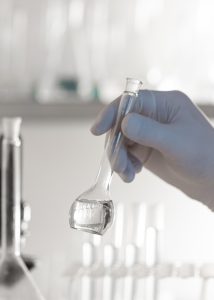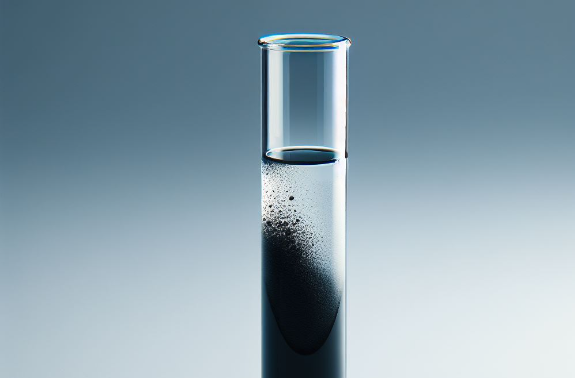Nucleic Acid Extraction Techniques
Few molecules play as critical a role as nucleic acids do. They include DNA, the blueprint of life, and RNA, the messenger carrying out the DNA’s instructions, which are the keystones of all known forms of life. That is why extraction of these nucleic acids is easily one of the most important processes in molecular biology and biological analysis.
Nucleic acid extraction, also known as nucleic acid isolation or nucleic acid purification, enables us to study, analyze and amplify genetic material. It is essential for obtaining good results in any kind of molecular diagnostics. Applications of such technologies allow us to develop new therapies and better understand different hereditary diseases and even life itself. [1]
Since DNA extraction was first performed by Swiss physician Friedrich Miescher in 1869 [2], scientists have made extraordinary progress in designing and developing extraction methods that are more reliable, easy to use, faster to perform, more cost-effective and produce a higher yield. Many new techniques such as extraction using magnetic beads or cellulose-based filter paper have been developed, making nucleic acid extraction more accessible.
What kind of methods and techniques have been developed for nucleic acid extraction?
Solution-based Methods
In contrast to solid-phase separation, solution-based nucleic acid extraction uses chemical reactions to release and purify nucleic acids in liquid solutions. This can offer advantages such as simplicity, speed, scalability, and cost-effectiveness. Among many others, some of the most widely used methods include phenol-chloroform extraction and cesium-chloride gradient centrifugation.
Phenol-Chloroform Extraction

Phenol-chloroform extraction method is a widely used process for isolating nucleic acids. It involves mixing phenol-chloroform solution with a sample, followed by centrifugation [3]. The solution splits into two layers: a bottom layer with organic molecules and a top layer with water-based molecules. After centrifugation the nucleic acids, which are water-loving, remain in the upper layer. The DNA is then washed with ethanol and either distilled water or other buffers. [4, 7, 12]
This method can also be used for extracting RNA using guanidinium isothiocyanate. For this purpose, a single-step technique of guanidinium thiocyanate-phenol-chloroform extraction has been developed by Chomczynski and Sacchi in 1987. [5]
Although this method is relatively easy and useful, the main drawback of phenol-chloroform extraction is its high hazard potential – both phenol and chloroform are extremely toxic, flammable, caustic and corrosive. Additionally, this method results in some DNA losses. [5, 6, 7]
Cesium Chloride Gradient Centrifugation

Cesium chloride (CsCl) gradient centrifugation with ethidium bromide (EtBr) was developed by Meselson M. and others in 1957 [8]. This method is primarily used to extract DNA or viruses. The process relies on the difference between the density of cesium ions, water and ethidium bromide. Ultracentrifugation creates a gradient, enabling the separation of compounds based on their densities. Ethidium bromide causes DNA to fluoresce facilitating its detection. [9, 10]
However, this method has its drawbacks. It is time-consuming, labor-intensive, and costly. Moreover, ethidium bromide might interfere with the results of other nucleic acid procedures, such as PCR or cloning. [11]
Solid-Phase Methods
Solid-phase extraction is a recently developed highly efficient and widely used technique for nucleic acid extraction. It facilitates a clearer separation of different phases. This method utilizes the ability of various solid materials to bind to and release nucleic acids, and is capable of nucleic acid extraction with limited use of organic solvents. Solid-phase extraction includes a variety of techniques, such as silica matrices and magnetic beads. [1, 12]
Silica Matrices

The silica-based method for nucleic acid extraction, developed by Boom R. and his team in 1990, has become the standard approach for commercial isolation of DNA and RNA [13]. The underlying principle, which is not yet fully understood, is based on the attraction between negatively charged DNA and positively charged silica particles in high-salt and alkaline conditions. Once the DNA is bound, it is then extracted under conditions of low ionic strength and acidity. [14, 15, 16]
Various types of silica matrices have been developed, including glass particles, glass powder, silica particles, glass microfibers, and diatomaceous earth. Each of these materials has unique properties and specific applications. [16] The main advantages of silica-based methods are their stable chemical properties, high surface area, and biocompatibility. However, the conditions required for nucleic acid elution can be harsh. [17]
Magnetic Beads
Nucleic acid isolation using magnetic particles, invented by T. Hawkins in 1998 [18], has demonstrated great results in yield, cost-effectiveness, scalability, and ease of use and automation compared to many other methods. The lack of centrifugation or other potentially damaging processes helps to preserve the structure of the nucleic acids. The procedure for extracting nucleic acids with this method is extremely user-friendly, requiring only inexpensive and straightforward laboratory equipment. [1, 19, 20]
This method of nucleic acid extraction uses magnetic properties of nucleic acids and certain binding compounds. These compounds may consist of iron, zinc or nickel oxide beads or magnetizable cellulose particles. After breaking the cell wall and adjusting the salt and polyalkylene glycol concentrations, negatively charged DNA and RNA molecules attach to positively charged magnetic beads. A magnet can then be placed on the side of the container, pulling the magnetic particles with already bound nucleic acids. After magnetization the remainder can be easily washed away with a buffer solution. [12, 18, 19]
Various coatings can be used to prepare magnetic particles depending on the type of sample and the desired outcome of the extraction. For example, iron oxide beads can be prepared using silane and carboxyl compounds, which aid in binding nucleic acids in polyethylene glycol solutions [18]. Alternatively, the beads can be coated with biopolymers like agarose, chitosan, κ-carrageenan, or alginate. Uncoated iron oxide molecules, however, tend to clump together, reducing the surface area available for nucleic acid binding. There are numerous other bead modification methods, each offering unique benefits and applications. [19]
Sources
- Ali, N., Rampazzo, R. D. C. P., Costa, A. D. T., & Krieger, M. A. (2017). Current nucleic acid extraction methods and their implications to point-of-care diagnostics. BioMed research international, 2017. https://doi.org/10.1155/2017/9306564
- Miescher, F. (1869). Letter I; to Wilhelm his; tübingen, february 26th, 1869. Die histochemischen und physiologischen arbeiten von Friedrich Miescher-aus dem wissenschaftlichen Briefwechsel von F. Miescher, 1, 33-38.
- Miescher, F. (1871). Ueber die chemische Zusammensetzung der Eiterzellen. Med.-Chem. Unters., 4, 441-460.
- Price, C. W., Leslie, D. C., & Landers, J. P. (2009). Nucleic acid extraction techniques and application to the microchip. Lab on a Chip, 9(17), 2484-2494. https://doi.org/10.1039/B907652M
- Buckingham, L., & Flaws, M. (2019) Molecular diagnostics: fundamentals, methods, & clinical applications. F.A. Davis.
- Chomczynski, P., & Sacchi, N. (2006). The single-step method of RNA isolation by acid guanidinium thiocyanate–phenol–chloroform extraction: twenty-something years on. Nature protocols, 1(2), 581-585. https://doi.org/10.1038/nprot.2006.83
- Espy, M. J., Uhl, J. R., Sloan, L. M., Buckwalter, S. P., Jones, M. F., Vetter, E. A. & Smith, T. (2006). Real-time PCR in clinical microbiology: applications for routine laboratory testing. Clinical microbiology reviews, 19(1), 165-256. https://doi.org/10.1128/cmr.19.1.165-256.2006
- Shin, J. H. (2013). Nucleic acid extraction techniques. Advanced Techniques i Diagnostic Microbiology, 209-225. https://doi.org/10.1007/978-1-4614-3970-7_11
- Meselson, M., Stahl, F. W., & Vinograd, J. (1957). Equilibrium sedimentation of macromolecules in density gradients. Proceedings of the National Academy of Sciences, 43(7), 581-588. https://doi.org/10.1073/pnas.43.7.581
- Su, Q., Sena-Esteves, M., & Gao, G. (2019). Purification of the Recombinant Adenovirus by Cesium Chloride Gradient Centrifugation. Cold Spring Harbor Protocols, 2019(5). https://doi.org/10.1101/pdb.prot095547
- Wright, J. J., Lee, S., Zaikova, E., Walsh, D. A., & Hallam, S. J. (2009). DNA extraction from 0.22 μM Sterivex filters and cesium chloride density gradient centrifugation. JoVE (Journal of Visualized Experiments), (31), e1352. https://doi.org/10.3791/1352
- Nath, K., Sarosy, J. W., Hahn, J., & Di Como, C. J. (2000). Effects of ethidium bromide and SYBR® Green I on different polymerase chain reaction systems. Journal of biochemical and biophysical methods, 42(1-2), 15-29. https://doi.org/10.1016/S0165-022X(99)00033-0
- Tan, S. C., & Yiap, B. C. (2009). DNA, RNA, and protein extraction: the past and the present. BioMed Research International, 2009. https://doi.org/10.1155/2009/574398
- Bruce, I. J., Taylor, J., Todd, M., Davies, M. J., Borioni, E., Sangregorio, C., & Sen, T. (2004). Synthesis, characterisation and application of silica-magnetite nanocomposites. Journal of Magnetism and Magnetic Materials, 284, 145-160. https://doi.org/10.1016/j.jmmm.2004.06.032
- Department of Biology, Davidson College. (n.d.). Geneclean®. Retrieved from http://www.bio.davidson.edu/courses/Molbio/MolStudents/spring99/lauren/geneclean.html
- Baker, L. E., McCormick, W. F., & Matteson, K. J. (2001). A silica-based mitochondrial DNA extraction method applied to forensic hair shafts and teeth. Journal of Forensic Sciences, 46(1), 126-130. https://doi.org/10.1520/JFS14923J
- Padhye, V. V., York C., & Burkiewiez, A. (1997). Nucleic acid purification on silica gel and glass mixture (United States patent No. 5658548). Promega Corporation. https://patents.google.com/patent/US5658548A
- Li, P., Li, M., Yue, D., & Chen, H. (2022). Solid-phase extraction methods for nucleic acid separation. A review. Journal of Separation Science, 45(1), 172-184. https://doi.org/10.1002/jssc.202100295
- Hawkins, T. (1998). DNA purification and isolation using magnetic particles (United States patent No. 5705628). Whitehead Institute for Biomedical Research. https://patents.google.com/patent/US5705628A
- Berensmeier S. (2006). Magnetic particles for the separation and purification of nucleic acids. Applied microbiology and biotechnology, 73(3), 495–504. https://doi.org/10.1007/s00253-006-0675-0





















 Racks for 0.2 mL Tubes
Racks for 0.2 mL Tubes Racks for 0.5 mL Tubes
Racks for 0.5 mL Tubes Racks for 1.5mL Tubes
Racks for 1.5mL Tubes Racks for 5mL Tubes
Racks for 5mL Tubes Racks for 15mL Tubes
Racks for 15mL Tubes Racks for 50mL Tubes
Racks for 50mL Tubes
 24- Well
24- Well 48- Well
48- Well 96- Well
96- Well 384- Well
384- Well
 Blocks for 1.5-2.0mL Tubes
Blocks for 1.5-2.0mL Tubes Blocks for 5mL Tubes
Blocks for 5mL Tubes Blocks for Cryogenic Tubes
Blocks for Cryogenic Tubes Blocks for 15mL – 50mL Tubes
Blocks for 15mL – 50mL Tubes Holders for 15 mL Tubes
Holders for 15 mL Tubes Holders for 50 mL Tubes
Holders for 50 mL Tubes